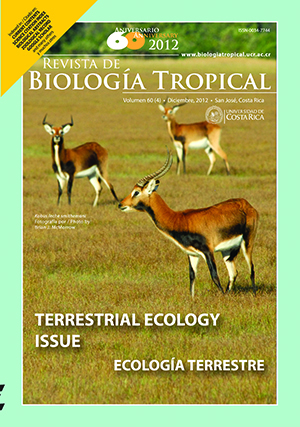Abstract
Reproductive phenologies of plants are constrained by climate in highly seasonal regions. In contrast, plants growing in wet tropical forests are freed from many abiotic constraints, which in canopy tree communi- ties lead to a rich diversity of phenological patterns within and among individuals, species and communities. However, basic descriptions of tropical phenological patterns and the processes that shape them are rare. Here, we document the individual-, population-, and landscape-level phenological patterns of two dominant fami- lies of understory woody plants important to avian frugivores, the Melastomataceae and Rubiaceae, along an elevational transect in Costa Rica. The 226 individual plants belonging to 35 species in this study, varied in the number of reproductive bouts/year, and the timing, duration, and synchrony of reproductive stages. This varia- tion was not related to factors related to their interactions with mutualists and antagonists, nor did it appear to be constrained by phylogeny. Diverse phenological patterns among species led to relatively aseasonal patterns at the community and landscape level. Overall, evidence for biotic processes shaping temporal patterns of fruiting phenology was weak or absent. These findings reveal a number of unexplained patterns, and suggest that factors shaping phenology in relatively aseasonal forests operate in idiosyncratic ways at the species level.##plugins.facebook.comentarios##
Downloads
Download data is not yet available.






